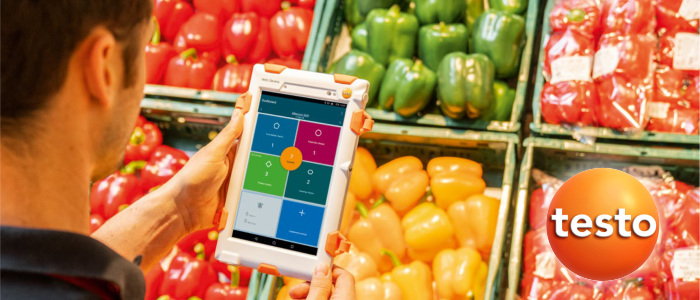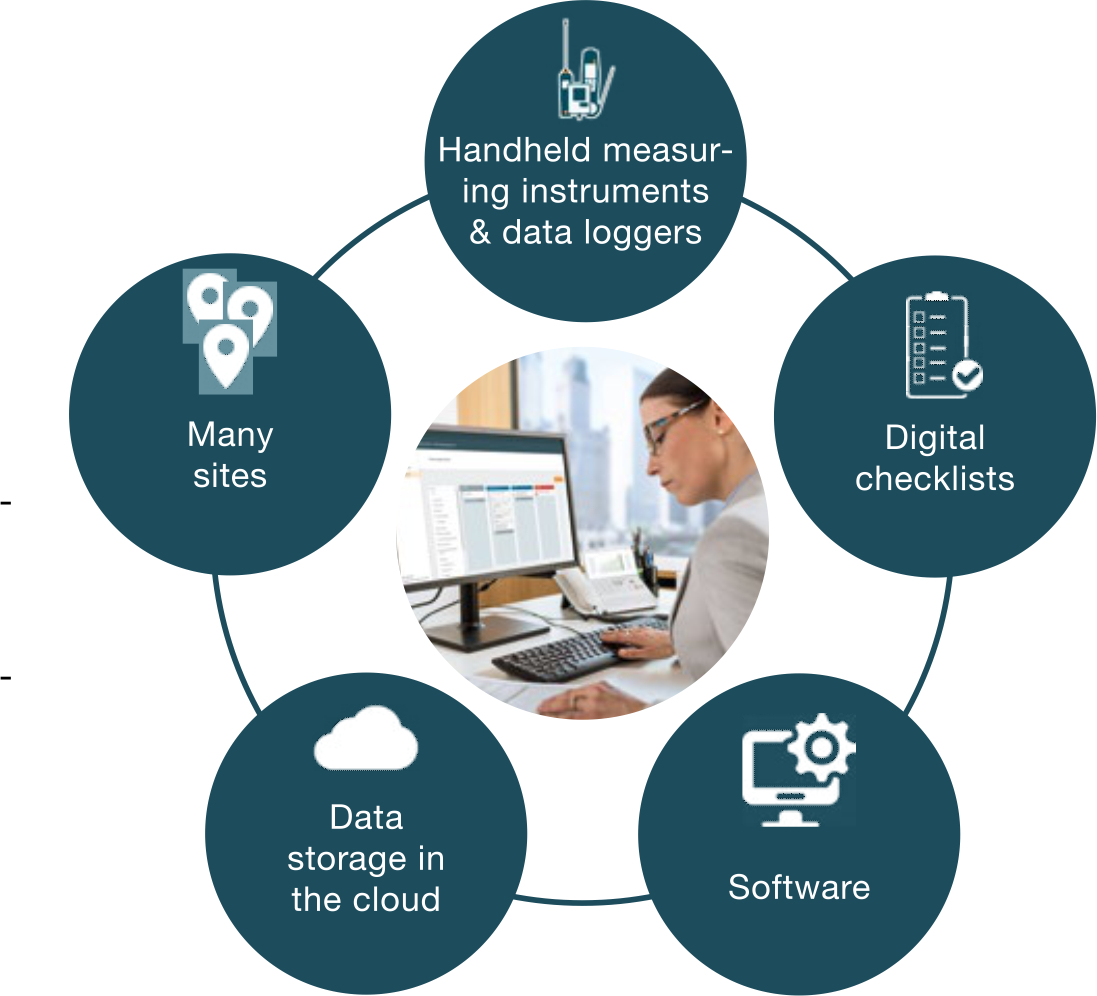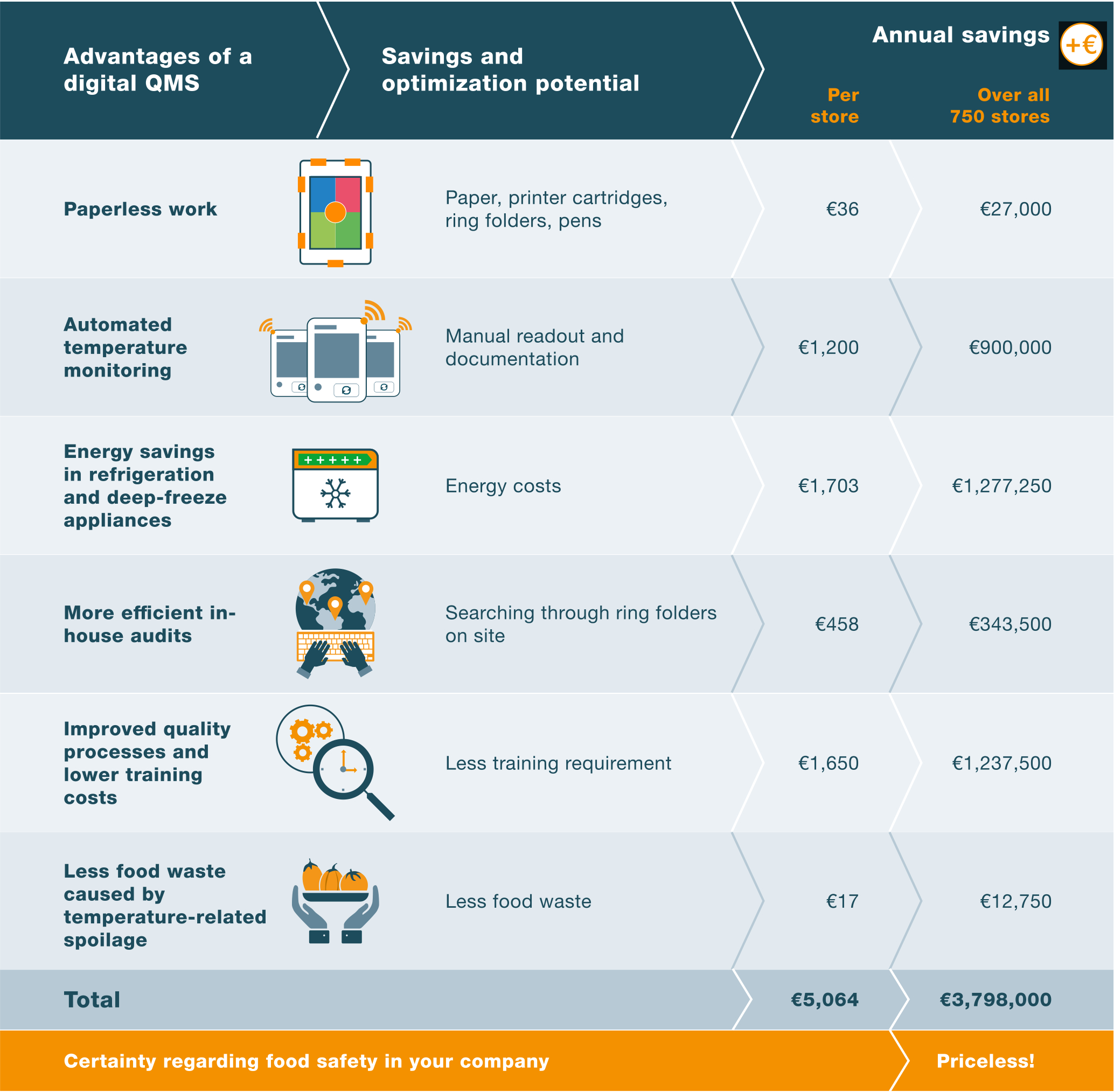
Digitalisation is more than a megatrend; it is experienced daily in reality. And since food safety is a necessity for all companies in the food sector, this topic should be treated as a priority in digital transformation.
However, the control and monitoring of all food safety measures still often take place with paper-based quality management systems (QMS). A digital QMS allows you and all other process participants to maintain food safety more easily, faster, and more reliably.
The investment in such a system not only introduces a new tool that improves the implementation of food safety. Even existing, routine processes are almost automatically optimized. This “secondary optimization” creates company-wide synergy effects regarding efficiency and savings.
Retail companies such as supermarkets, service stations and convenience stores use different systems to implement and document food safety. Most apply a paper-based quality management system (QMS). The measures fixed in these have grown over years, and the staff are familiar with their implementation. However, in the food sector, the insight that quality management is no longer conceivable without digital systems is becoming more and more established.
Compared to their analogue equivalents, digital QMS offer compliance through higher visibility of the relevant parameters and increased efficiency of all procedures involved – all factors which make it easier for the users to implement food safety requirements.
The decision to switch over from a manual to a digital QMS, however, is not to be taken lightly – it involves a considerable investment in terms of time and resources. If one takes not only the initial costs, but also the repetitive costs into consideration, the calculation becomes even more complex. It is thus only consistent to take a closer look at the return on investment (ROI) of a digital QMS.
This white paper below outlines the factors that play a part in the calculation of the ROI and uses the anonymous calculation example of a large European supermarket chain to demonstrate how a digital QMS allows more efficient work while lowering costs and saving time.
What is a digital quality management system?
|
The use of a digital QMS allows food safety as well as the freshness and quality of the products to be increased. In addition to this, quality processes in the company are optimized, and the certainty about quality checks carried out and data documented, is raised. These data are no longer gathered manually on paper, but with digital checklists.
The combination of handheld measuring instruments which automatically transfer the measurement values to the system, and data loggers which reliably record and evaluate temperatures regularly, allows full transparency over the recorded quality data to be obtained in one system. In cases of deviations, staff receive alarms and can not only analyze the data and performance of the sites but can optimize processes before problems occur.
Overall, these properties and advantages ensure that the use of a digital QMS noticeably lowers costs.
|
 |
Relevant advantages of a digital QMS
This whitepaper below shows the example of a large European supermarket chain with 750 stores, which has switched over from a paper-based QMS to a digital one with integrated, automated temperature monitoring. The financial advantages created by the introduction of the digital QMS have been calculated.
The calculation of the ROI starts with determining the costs of your manual QMS. You can then compare these costs with the projected costs of the installation and care of a digital system.
For retail businesses, the following advantages of a digital QMS are particularly relevant:

1. More reliable quality checks
This study shows that quality checks are considerably more efficient after the introduction of the digital QMS, in comparison to the paper method. Fewer methodical errors were observed, while returned deliveries and post-rectification of defects were reduced. Thanks to the improved adherence to compliance, customer satisfaction was also improved.
Considerably less paper is used if the quality checks are carried out digitally, so the expenditure for paper, printer ink, ring folders and pens is eliminated, as is the space needed for storage of the paper. All measurement values and recorded data are stored digitally and can be called up from anywhere and at any time with just a few clicks.
2. Automated temperature monitoring
To guarantee food safety, it is necessary to check the temperatures of refrigeration and deep-freeze units as well as refrigerated rooms. The manual implementation and documentation of temperature checks is time-consuming. The process is simplified if temperatures are measured, documented, and checked automatically, allowing an immediate reaction to warnings and alarms for critical temperature ranges.
When your staff no longer need to read out and document the values manually, they have significantly more time for more profitable activities. Most importantly, if a limit value is exceeded, the system gives out an alarm, allowing an early reaction.
3. Reduced operating costs for refrigeration units
With an automated temperature monitoring system, the exact temperature curves of the refrigeration and deep-freeze units, including the defrosting phase, are known. Special data loggers can also simulate the product temperature curves and document when the door was opened, in addition to measuring the air temperature. How many hours per day are the doors of the refrigerated rooms and refrigeration units in your supermarket open? An unnecessary energy loss can quickly develop into a problem with food safety.
Field studies have shown that temperature settings and the control of refrigeration units are far from optimal when it comes to food safety as well as energy. To be on the safe side, many deep-freeze and refrigeration units are set at lower temperatures than necessary resulting in a higher consumption, and therefore costs.
As the whitepaper outlines, transparency of the system allows for better management of this, resulting in cost-cutting.
4. Reduced time and effort for in-house audits
Access to real-time reports and a complete overview of the performance of all sites simplifies decision-making in daily business. Thanks to the digital transparency over the performance of the stores, paper documentation no longer needs to be examined in the individual supermarkets on site.
With a digital QMS, searching through file folders is a thing of the past, and you can carry out in-house audits in a targeted way, where they are really needed. This is also possible remotely – which is a special advantage in times of contact limitations, such as experienced during the COVID pandemic.
5. Reduced costs for staff training
Digital systems offer many different possibilities for guiding and supporting staff in conducting quality checks. This reduces the staff training effort required for food safety. Also, since manual temperature checks are eliminated, there is no need for them to be trained either.
Studies show that the staff enjoy conducting quality checks digitally more than looking after paper lists. This improves their consciousness of quality and food safety in the company.
6. Less food waste
The use of a temperature monitoring system significantly contributes to maintaining the cold chain and noticeably reduces the amount of spoiled food. Thanks to the alarms not only limit value violations of temperatures are identified early. The staff can also react in a targeted way when the doors of storage rooms and refrigeration units are left open too long and the temperatures deviate into ranges which endanger the freshness, quality, and food safety of your products.
In our case study, the supermarket chain also reports that they have recorded less food waste during incoming goods inspections thanks to the non-contact temperature measurement and digital documentation.
Time to consider the switch to a digital QMS?
The implementation of a digital QMS saves money. And what is more important: the company works in compliance with the industry standards. This creates the basis for fast and flexible reactions to changes.
Would you like to find out how you can use a digital QMS efficiently in your company, to better guarantee food safety and sustainably lower costs? We look forward to continuing the conversation on digital QMS in more detail with you, and to being involved in the calculation of your individual, tailor-made ROI.
Contact our expert today:
Johan Loubser: jloubser@testo.co.za | +27 76 722 1115
Or visit our website for more info: https://www.testo.com/en-ZA/solution/saveris-retail-chain-food-store
For more details of the Case Study mentioned in this article, please access the full whitepaper below.
Download Whitepaper-ROI-Quality-Management-System-EN.pdf






